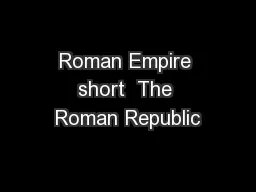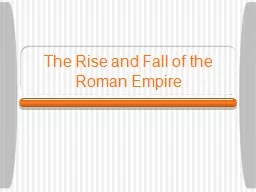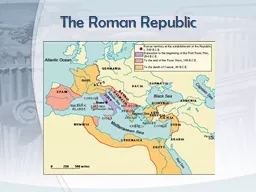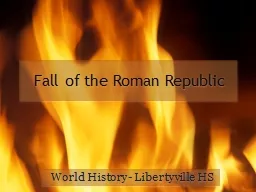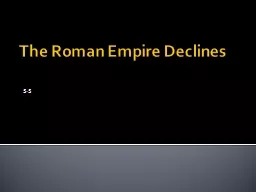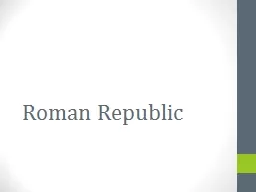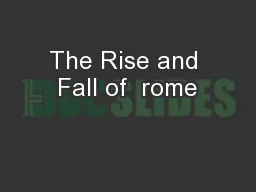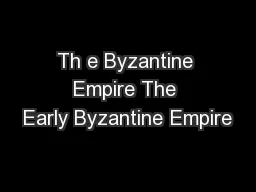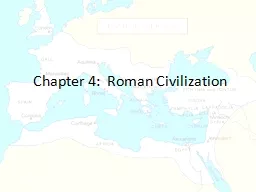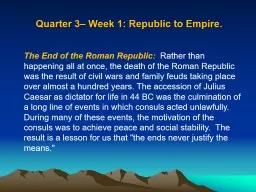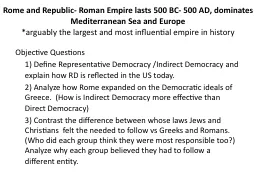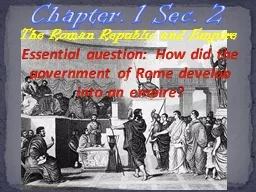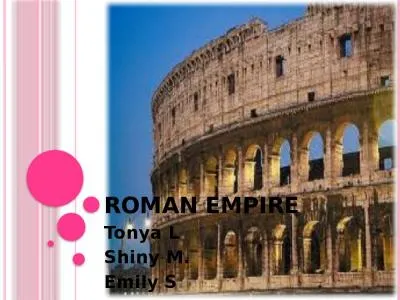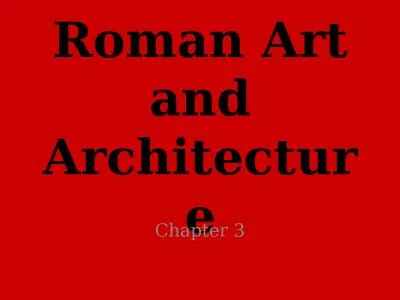PPT-Roman Empire short The Roman Republic
Author : tatyana-admore | Published Date : 2018-03-12
Consuls at the highest level held power that extended over the lands Rome ruled At the end of their oneyear term they entered the Senate of Rome the highest legislative
Presentation Embed Code
Download Presentation
Download Presentation The PPT/PDF document "Roman Empire short The Roman Republic" is the property of its rightful owner. Permission is granted to download and print the materials on this website for personal, non-commercial use only, and to display it on your personal computer provided you do not modify the materials and that you retain all copyright notices contained in the materials. By downloading content from our website, you accept the terms of this agreement.
Roman Empire short The Roman Republic: Transcript
Download Rules Of Document
"Roman Empire short The Roman Republic"The content belongs to its owner. You may download and print it for personal use, without modification, and keep all copyright notices. By downloading, you agree to these terms.
Related Documents

